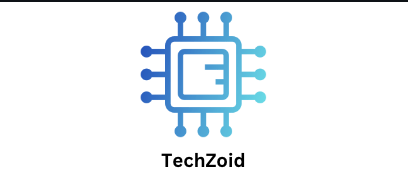Real-Time Bidding (RTB): What is it?
Real-Time Bidding, or RTB, is a programmatic advertising technique in which digital ad impressions are purchased and sold through automated auctions that take place during the milliseconds it takes for a webpage to load. An ad exchange immediately receives user data (such as demographics, interests, and surfing habits) when a user opens an app or visits a website. The highest bidder then wins the impression as advertisers vie in real time to show their adverts to that specific user.
This procedure, which happens nearly immediately, maximizes the value of each impression for publishers and advertisers while guaranteeing that the ad displayed is pertinent to the user. RTB gives marketers the ability to choose at the individual impression level, in contrast to traditional ad purchasing techniques that include bulk purchases and human discussions.
What Is the Process of Real-Time Bidding?
Demand-side platforms (DSPs), supply-side platforms (SSPs), ad exchanges, publishers, and advertisers are some of the major participants in the intricate ecosystem in which RTB occurs.
User Visit: The publisher’s SSP notifies an ad exchange about the user’s profile and the available ad space when a user visits a website or uses an app.
Auction Initiation: After informing many DSPs that an impression is up for bid, the ad exchange starts the auction.
Bidding Process: Using DSPs, advertisers assess user data in real time to determine their bid amount for the impression.
Winning offer: The user sees the winning advertiser’s ad nearly immediately after the auction is won by the highest offer.
Ad Display: All of this takes place in milliseconds, or before the user’s device has finished loading the page or app.
The main benefits of RTB in the current digital marketing environment are efficiency, scalability, and precision targeting, all of which are guaranteed by this automated approach.
Real Time Bidding Advantages
Targeting efficiency is one of RTB’s main advantages. To make sure their ads are seen by the most appropriate audiences, advertisers may use comprehensive data, including age, location, interests, and browsing history. This enhances return on investment (ROI) in addition to raising engagement.
Additionally, RTB is cost-effective. Advertisers avoid squandering money on irrelevant audiences since they only bid for impressions that fit their requirements. Furthermore, the competitive bidding approach guarantees that the price of impressions accurately represents their market worth.
RTB offers publishers a means of optimizing their earnings. They may raise rates and make sure that every impression is profitably monetized by opening their ad spots to numerous bids at once rather than selling their ad inventory at a set cost.
Additionally, RTB offers insights and analytics in real time. Instantaneous campaign performance measurement, user engagement tracking, and data-driven modifications are all available to advertisers. Traditional advertising techniques were unable to provide this degree of control and openness.
Issues & Difficulties with RTB
Even with all of its benefits, RTB has drawbacks. One of the biggest worries is data privacy. Given how much RTB depends on user data, concerns around permission and adherence to privacy regulations like the CCPA and GDPR have grown in significance. Platforms and advertisers are required to make sure that user data is gathered, saved, and handled appropriately.
Ad fraud is another problem that arises when bots or phony impressions are exploited to influence bidding systems. Inaccurate campaign performance statistics and wasted advertising budget are possible outcomes of this. The industry is implementing sophisticated fraud detection and verification techniques to counter this.
Furthermore, brand safety is becoming a bigger concern as marketers want to make sure their advertisements don’t show up next to offensive or divisive material. Many DSPs now include contextual targeting tools and brand safety measures in order to solve this.
Real-Time Bidding’s Future
RTB is anticipated to grow increasingly more complex as technology develops further. RTB systems are progressively using machine learning (ML) and artificial intelligence (AI) to improve campaign success, forecast user behavior, and improve bidding tactics.
The trend toward privacy-first advertising, which will prioritize contextual and cohort-based targeting over individual user monitoring, will also have an impact on RTB in the future. This will preserve the efficacy of advertising while guaranteeing adherence to data standards.
Conclusion
By fusing automation, data, and accuracy, Real Time Bidding has transformed the digital advertising sector. It enables publishers to optimize their ad income while enabling advertisers to effectively reach their target consumers. Though challenges related to privacy, fraud, and brand safety persist, ongoing technological innovations and stricter regulations are steadily improving the ecosystem.
